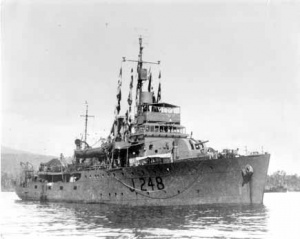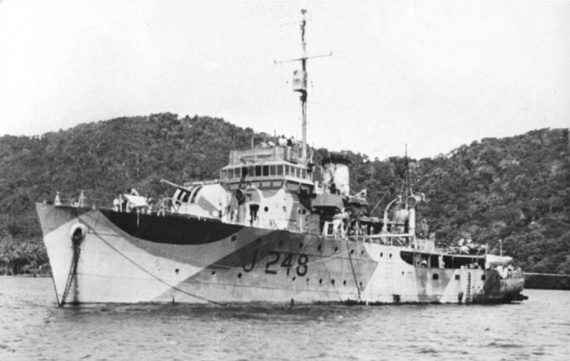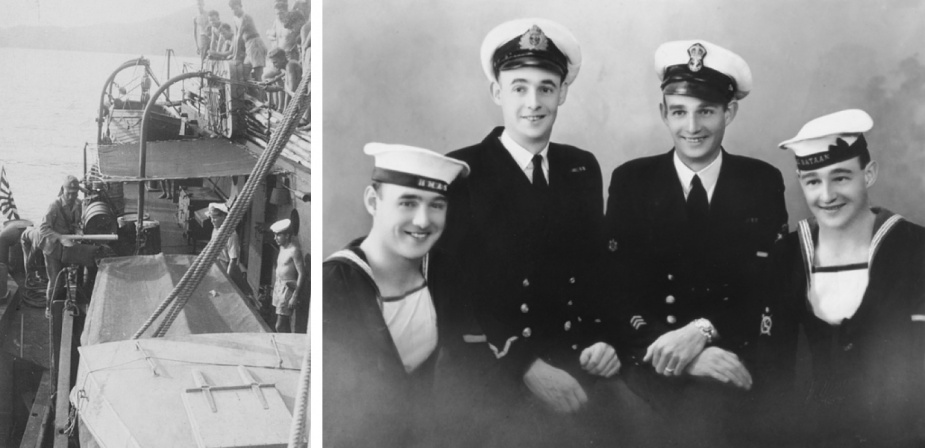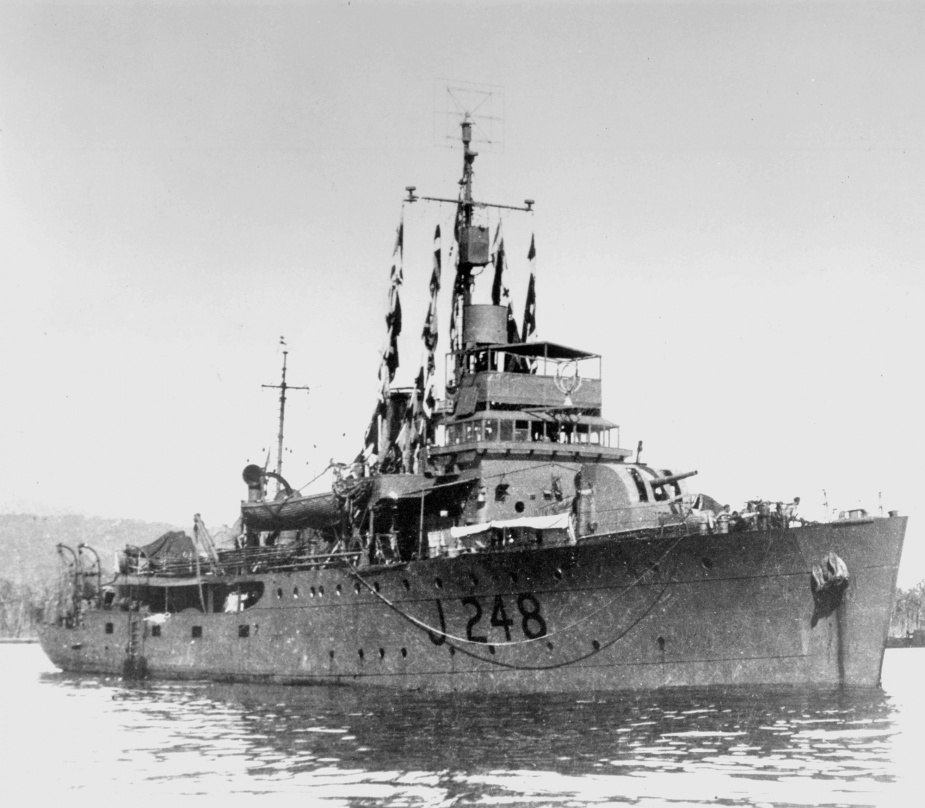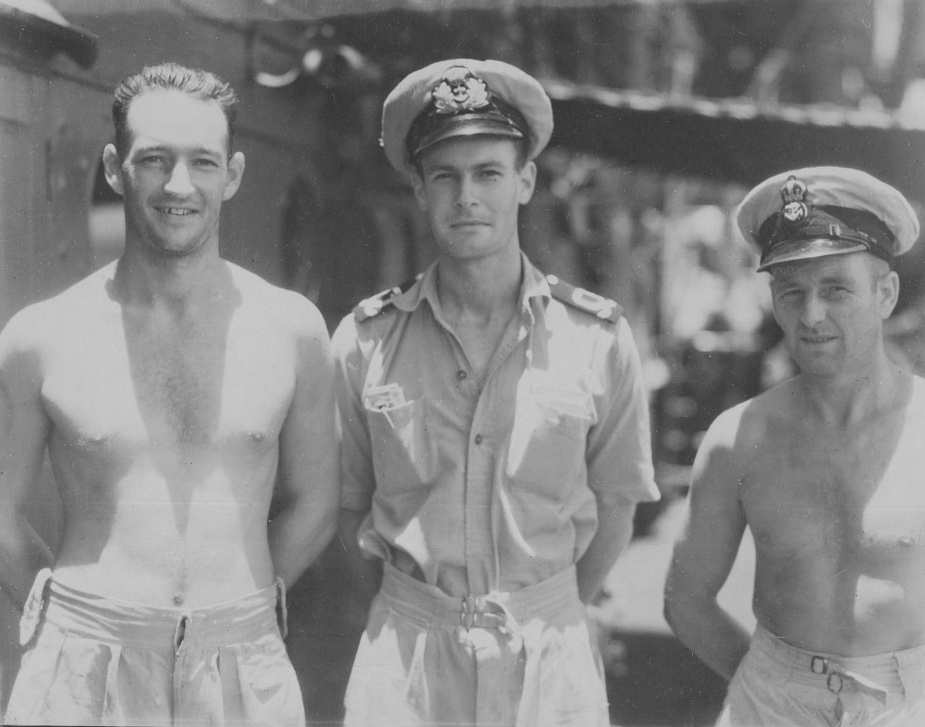HMAS Shepparton (I)
| Class |
Bathurst Class |
|---|---|
| Type |
Australian Minesweeper |
| Pennant |
J248 |
| Builder |
Melbourne Harbour Trust, Williamstown |
| Laid Down |
14 November 1941 |
| Launched |
15 August 1942 |
| Launched by |
Lady Alice Goudie, wife of the Commissioner of Public Works, Victoria |
| Commissioned |
1 February 1943 |
| Decommissioned |
10 May 1946 |
| Dimensions & Displacement | |
| Displacement | 650 tons |
| Length | 186 feet 2 inches |
| Beam | 31 feet |
| Performance | |
| Speed | 15 knots |
| Complement | |
| Crew | 81 |
| Propulsion | |
| Machinery | Triple expansion, 2 shafts |
| Horsepower | 1,800 |
| Armament | |
| Guns |
|
| Other Armament |
|
| Awards | |
| Battle Honours | |
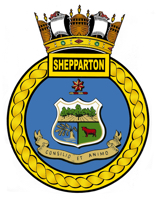
HMAS Shepparton was one of sixty Australian Minesweepers (commonly known as corvettes) built during World War II in Australian shipyards as part of the Commonwealth Government’s wartime shipbuilding programme. Twenty were built on Admiralty order but manned and commissioned by the Royal Australian Navy. Thirty six (including Shepparton) were built for the Royal Australian Navy and four for the Royal Indian Navy.
Shepparton commissioned at Melbourne on 1 February 1943 under the command of Lieutenant Commander LN Morison RANR(S).
Following successful completion of her trials in home waters Shepparton proceeded to New Guinea at the end of April 1943 where she began operations as a Survey Ship. For the next seventeen months, except for occasional visits to Queensland ports, Shepparton was operational on survey duties in New Guinea and New Britain waters. This period of her service ended with a survey of Endeavour Strait and Scotts Reef.
On 8 October 1944 Shepparton arrived at Darwin where she became attached to the Survey Task Unit operating in the area to begin a series of surveys in north west Australian waters. On 1 February 1945 she began refitting at Brisbane, returning to Darwin on 2 April to resume survey work between Cape Croker and New Year Island.
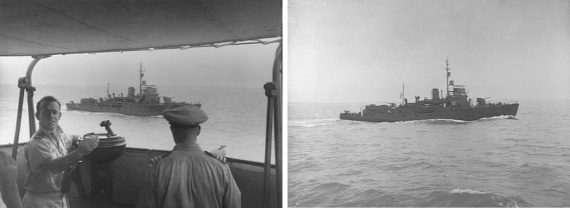
On 13 June 1945 Shepparton’s work in the Darwin area ended and the next day she sailed for Thursday Island to resume operations in Torres Strait. On 2 September she sailed for Jacquinot Bay (New Britain) and thence to Rabaul where she spent ten days surveying in Simpson Harbour, returning to Jacquinot Bay on 17 September to take soundings of the anchorage. This work was completed in two days and Shepparton proceeded to the Solomons where she spent three weeks surveying the approaches to Torokina.
On 21 October 1945 she arrived at Brisbane, bringing her service outside home waters to a close. After some further survey work on the Australian coast, including six weeks operating in Moreton Bay, Shepparton’s seagoing career ended early in February 1946. One of her last duties shortly before preparing to pay off was to assist in the refloating of her sister ship HMAS Cairns (I), which had grounded on Shark Spit, Moreton Island.
Shepparton paid off into Reserve at Brisbane on 10 May 1946. During her war service she steamed some 62,000 miles.
On 4 November 1947 Shepparton’s sister ship HMAS Deloraine (I) sailed from Brisbane for Sydney with Shepparton in tow. On 7 November the ships arrived at Sydney, where Shepparton remained in Reserve. On 20 February 1958 the ship was sold for scrap to Mitsubishi Shoji Kaisha Ltd of Tokyo.
Note: This video is hosted on YouTube. Department of Defence users will not be able to view this video on the Defence Protected Network.
This cine film has been placed online as part of the Sea Power Centre - Australia’s ongoing archival digitisation program.
Further Reading
- The Corvettes: Forgotten Ships of the Royal Australian Navy, by Iris Nesdale - published by the Author, October, 1982.
- Corvettes - Little Ships for Big Men, by Frank B Walker - published by Kingfisher Press, NSW, 1996.
- The Australian Centenary History of Defence Volume III, The Royal Australian Navy, edited by David Stevens, Oxford University Press, South Melbourne, Victoria, Australia, 2001.

